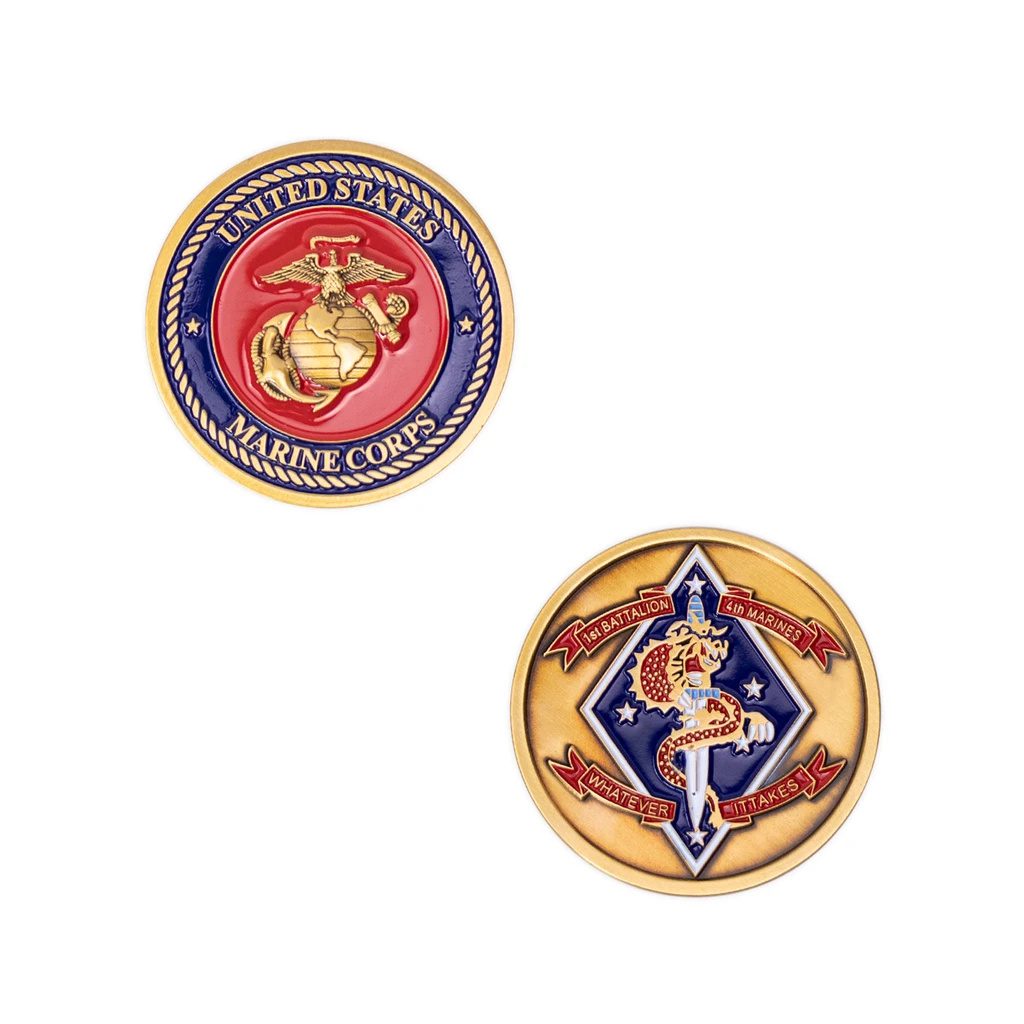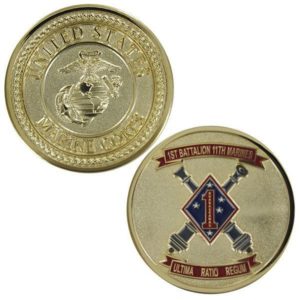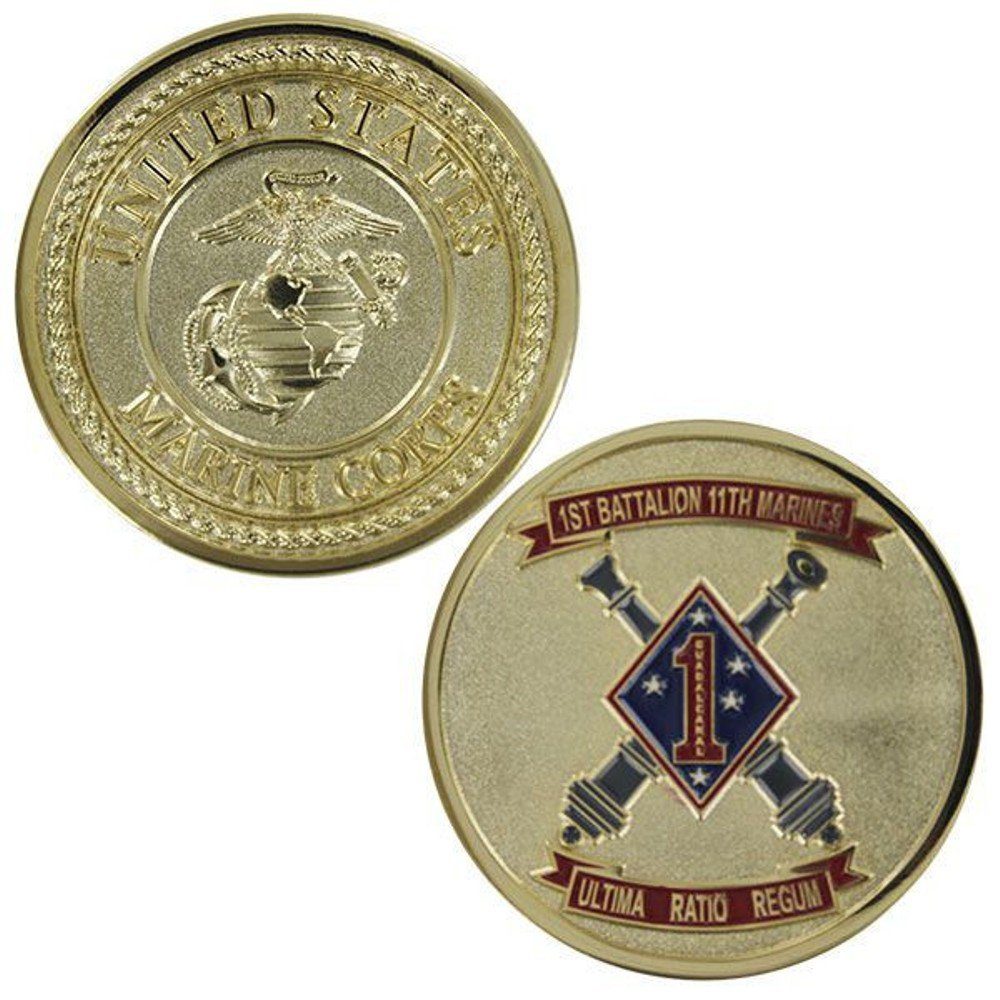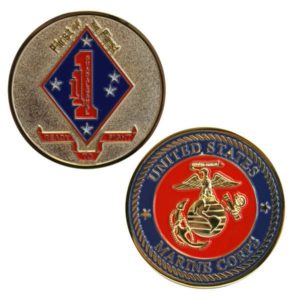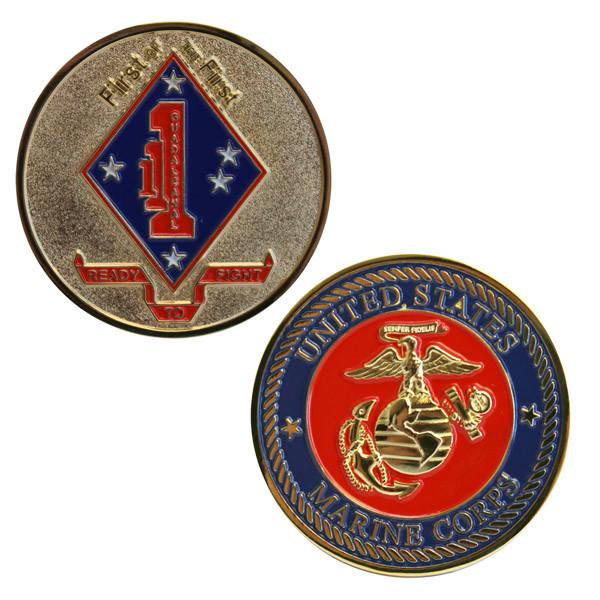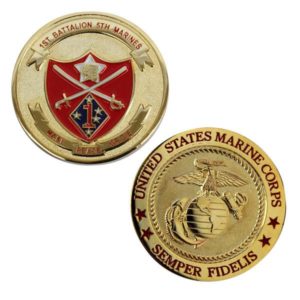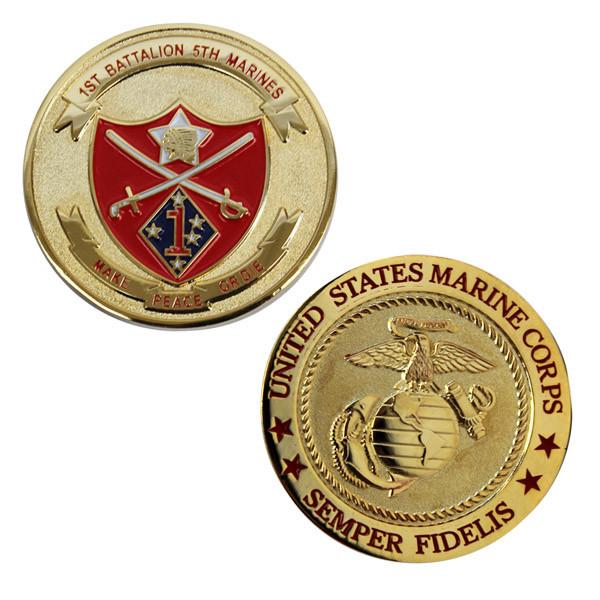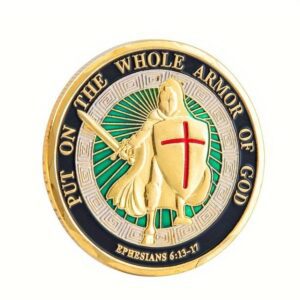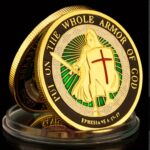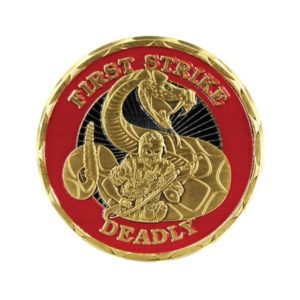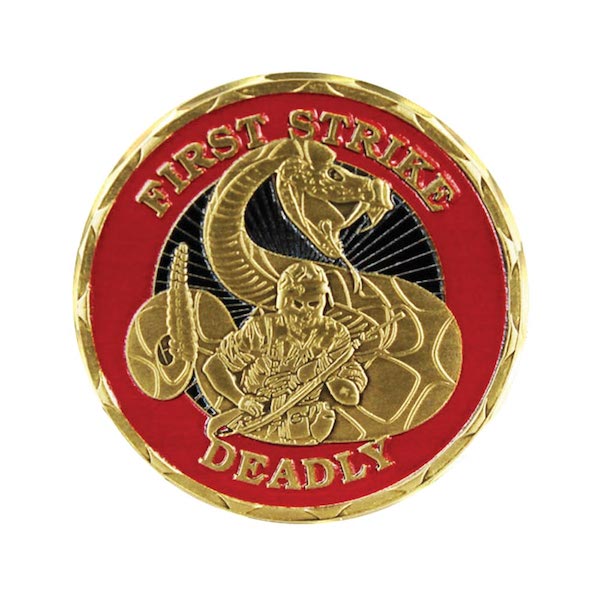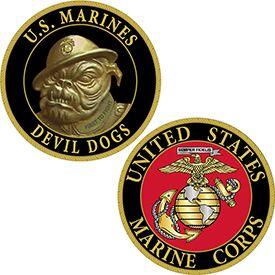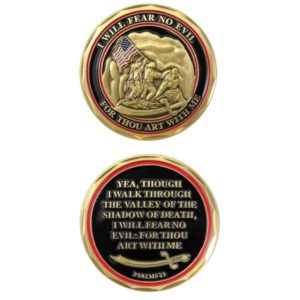Description
1st Battalion, 4th Marines is an infantry battalion in the United States Marine Corps based out of Marine Corps Base Camp Pendleton, California. They fall under the command of the 1st Marine Regiment and the 1st Marine Division.
Our 1st Battalion 4th Marines Coin is made from polished bronze with a straight cut edge. This coin has the look and feel of genuine quality and would make a great addition to your collection or as a special gift for your U.S. Marine. Arrives professionally & individually packaged. Made in USA.
1st Battalion 4th Marines USMC Challenge Coin Features
- 1st Battalion 4th Marines Coin
- “1st Battalion 4th Marines” “Whatever It Takes” on front of coin. “United States Marine Corps” on back.
- Bronze alloy.
- Accented in bold colors.
- Measures 1.5 inches
- Individually packaged
- Made in USA
- Ships fast!
- Licensed by the U.S. Marine Corps.
Marine Corps Base Camp Pendleton and MCAS Camp Pendleton
Marine Corps Base Camp Pendleton is located on the Southern California coast in San Diego County. It’s a significant West Coast base of the USMC.
Founded in 1942 for training U.S. Marines during World War II, it became a permanent installation by 1944. Named after Major General Joseph Henry Pendleton, an advocate for a West Coast Marine Corps training facility, Camp Pendleton now hosts various Operating Force units, including the I Marine Expeditionary Force and numerous training commands.
The history of Camp Pendleton dates back to a Spanish expedition in 1769, with the land later becoming part of the Mission San Luis Rey and subsequently the Rancho Santa Margarita y Las Flores under private ownership. The ranch’s cattle brand design is incorporated into the base’s logo.
During World War II, the base expanded rapidly, housing several training schools and serving as a discharge base post-war. In subsequent years, Camp Pendleton played a pivotal role in the Korean and Vietnam Wars. Today, the base spans over 125,000 acres, offering diverse geography for training Marines and other U.S. military branches. Its historical and operational significance continues, balancing military readiness with cultural and environmental preservation.
Marine Corps Air Station Camp Pendleton, or MCAS Camp Pendleton, a key component of the base, was commissioned in 1942 and is currently home to Marine Aircraft Group 39. Known as Munn Field, honoring Lieutenant General John C. “Toby” Munn, the air station began as an auxiliary landing field and evolved over time. MCAS Camp Pendleton has expanded to support a variety of helicopter and tilt-rotor squadrons, including Marine Light Attack Helicopter and Marine Medium Tilt-rotor squadrons. This air station plays a vital role in supporting over 180 helicopters and various units, reflecting the increasing importance of aviation in Marine Corps tactics.
Marine Corps Challenge Coins
Marine Corps challenge coins are deeply rooted in military tradition. They symbolize honor, camaraderie, and individual accomplishments in the USMC.
Military challenge coins trace their roots back to ancient Rome, where custom coins rewarded exceptional feats. They later evolved into “portrait medals” during the Renaissance.
In the early US military, challenge coins were exclusive to high-ranking officers recognizing exceptional achievements. Notably, in World War I, a pilot’s coin saved his life by proving his identity. Some argue that modern challenge coin traditions, including in the Marine Corps, originated during the Vietnam War for bar entry.
Today, these coins signify specific achievements or service excellence and carry sentimental value, serving as tokens of significant moments in a Marine’s journey.
Marine Coin Check, Traditions, and Rules
A coin check is a spontaneous challenge where members must promptly display their coins.
Rules for coin checks are informal, allowing challenges to occur anywhere, anytime, by displaying the coin and shouting “coin check!” Accidentally dropping a coin counts as a deliberate challenge. Responding within ten seconds by presenting a unit’s coin is essential.
Consequences add a playful element: failure to produce a coin results in buying drinks for the challenger and others. Conversely, a successful challenge requires the challenger to buy a round for the group.
The tradition also includes coin theft, with successful thieves earning a drink. Coins are typically carried for easy access, with a widely accepted rule of “a step and a reach.” Presentation often occurs subtly during handshakes, with modifications like drilling holes or attaching them to belt buckles invalidating their challenge status.


